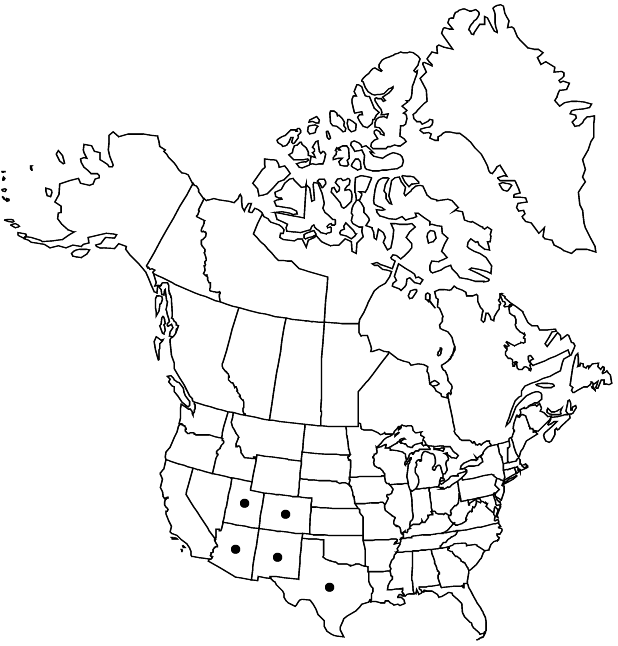Ribes leptanthum
Mem. Amer. Acad. Arts, n. s. 4: 53. 1849 ,.
Plants 0.5–2 m. Stems erect or arching, crisped-puberulent, glabrescent; spines at nodes 1–3, 2–19 mm; prickles on internodes absent or sparse to dense. Leaves: petiole (0.1–) 0.7–2 (–4) cm, crisped-puberulent; blade orbiculate or reniform-orbiculate, 3–5 (–7) -lobed, cleft nearly to midrib, 0.5–1.6 (–2.7) cm, base subcordate or truncate, surfaces usually glabrous, sometimes puberulent, rarely glandular-pubescent, lobes oblong to cuneate, margins with acute teeth, sometimes revolute, apex rounded. Inflorescences pendent, solitary flowers or 2 (–4) -flowered racemes, 1.5–2.5 cm, axis puberulent, flowers evenly spaced. Pedicels not jointed, 0.5–1 mm, puberulent; bracts lanceolate, 0.5–4 mm, (with 2 smaller bractlets immediately proximal to each flower), puberulent. Flowers: hypanthium greenish white to white, tubular, (2.3–) 4–6 mm, softly hispid abaxially, glabrous adaxially; sepals not overlapping, spreading, greenish white to white, lanceolate, (2.5–) 3.5–7 mm; petals nearly connivent, erect, cream with red margins, whitish or pinkish, oblanceolate to spatulate-obovate, not conspicuously revolute or inrolled, 2–4.4 mm; nectary disc not prominent; stamens nearly as long as petals; filaments linear, 1.3–3 mm, glabrous; anthers cream to violet, oval, 0.5–1.6 mm, apex with cupshaped depression; ovary pubescence not bristly, hairs soft; styles connate nearly to stigmas, 0.7–1 mm, glabrous. Berries palatable, dark red to black, globose, 5–10 mm, glabrous, sometimes sparsely puberulent or glandular-pubescent. 2n = 16.
Phenology: Flowering Apr–Jun(-Jul).
Habitat: Coniferous forests
Elevation: 1700-3000 m
Distribution

Ariz., Colo., N.Mex., Tex., Utah.
Discussion
Selected References
None.